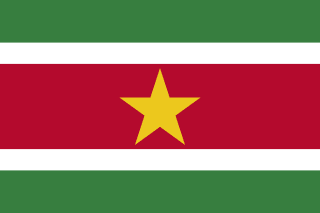Suriname, located in South America, has a strategic maritime frontage along the Atlantic Ocean. Its main port, Paramaribo, plays a crucial role in regional maritime trade and logistics. The country has modern port infrastructure promoting international exchanges. Suriname is known for its marine biodiversity and its efforts to protect the coastal environment. Exclusive economic zones and maritime regulations are defined to ensure the safety and sustainable development of maritime activities. This guide provides a detailed analysis of the maritime aspects of Suriname, including its port traffic, marine resources, and the challenges related to maritime transport and navigation in this rich and dynamic region.

Explore the strategic ports and maritime infrastructure of suriname

Essential maritime information about Paranam Port port for sea professionals

Essential maritime information about Wageningen Port port for sea professionals

Essential maritime information about Paramaribo Port port for sea professionals

Essential maritime information about Nieuw Nickerie Port port for sea professionals

Essential maritime information about Moengo Port port for sea professionals
Explore the strategic ports and maritime infrastructure of suriname
Suriname is a country located on the northeast coast of South America, bordered by the Atlantic Ocean to the east. Its geographical position gives it a strategic maritime frontage, essential to its economy and international trade. The capital, Paramaribo, is near the coast and houses the country's main port, which is a critical entry point for imports and exports. Suriname's territorial waters and exclusive economic zone extend into the Atlantic Ocean, giving the country significant access to fishery and marine resources.
This metropolitan positioning makes it a hub for maritime routes between North America, South America, and the Caribbean. Suriname benefits from a natural environment rich in marine biodiversity, with mangroves and reefs playing a major ecological role and protecting the coast against erosion. As a coastal nation, maritime activities such as shipping, fishing, and managing marine protected areas are vital for its sustainable development.
The port of Paramaribo is the heart of Suriname's maritime trade. It is equipped to accommodate various types of vessels, including container ships, general cargo vessels, and tankers. Modernized port terminals facilitate the quick and safe unloading of cargo. The port authority enforces strict safety rules to ensure safe navigation and the protection of the marine environment.
Suriname also has infrastructure for naval maintenance and logistical services essential for maritime operations. Fishing is a major industry, supported by exclusive economic zones rich in marine species, which significantly contributes to the local economy. The government establishes regulations to preserve marine resources while encouraging sustainable fishing.
Moreover, maritime transport plays a key role in regional connectivity, thanks to regular links with neighboring countries and international markets. Suriname strives to integrate environmentally friendly practices and adopt international standards in maritime safety, thus ensuring harmonious development of its maritime sector while protecting its natural wealth.